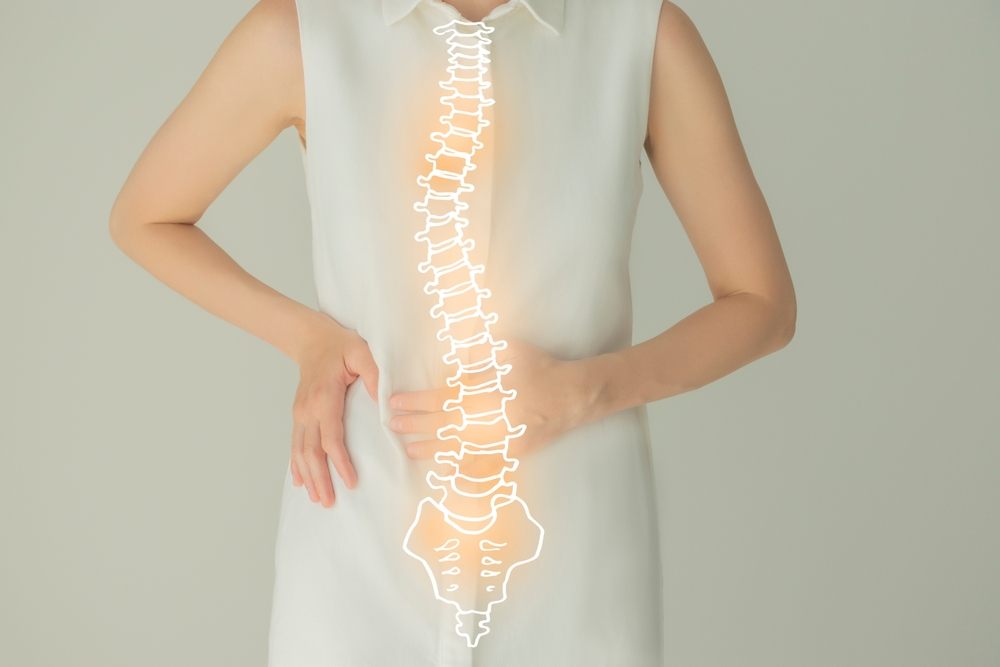 Spinal cord injuries can be intimidating when they happen to you or a loved one. There may seem to be many unknowns, and it’s easy to forget to ask your doctors questions about your injury and the future. Spinal cord injuries are caused by trauma to the spinal cord, usually as a result of a car accident, fall, diving injury, or sports injury.
Spinal cord injuries can be intimidating when they happen to you or a loved one. There may seem to be many unknowns, and it’s easy to forget to ask your doctors questions about your injury and the future. Spinal cord injuries are caused by trauma to the spinal cord, usually as a result of a car accident, fall, diving injury, or sports injury.
Current numbers show that car accidents are the most common cause of spinal injuries. AICA Orthopedics has experienced car wreck doctors on staff who treat car accident injuries every day.
What Is a Spinal Cord Injury?
Spinal cord injuries are complex injuries caused by trauma to your spine. There are many different ways spinal cord injuries can occur; a few examples include falls, car accidents, sports injuries, or even surgical complications. There are two primary descriptors when discussing spinal cord injuries, incomplete and complete. Sometimes, it can take several days and even weeks to determine which type of spinal cord injury a patient has due to swelling after the trauma.
What Is an Incomplete Spinal Cord Injury?
A spinal cord injury is considered a complete spinal cord injury when the spinal cord is completely severed, compressed, or in some way permanently damaged, preventing all brain signals from reaching parts of the body below the injury.
What Is a Complete Spinal Cord Injury?
An incomplete spinal cord injury will leave a patient with some feeling or function below the location of the trauma. These are the most common type of spinal cord injury and the most complex due to their variances among patients.
What Are Common Symptoms of a Spinal Cord Injury?
If you have experienced trauma, especially one that may have impacted your back, it is important to Seek medical treatment as soon as possible. You may see some of these common symptoms of spinal cord injury.
Incomplete
- Reduced sensation below the injury site
- Pain below the injury site
- Difficulty articulating extremities
Complete
- Total loss of sensation below the injury site
- Total or complete loss of bowel and/or bladder function
- Difficulty breathing (more common in injuries higher on the spine)
What Are Important Questions I Should Ask After a Spinal Cord Injury?
➢ Will I be able to walk?
One of the most common questions for patients who have a spinal cord injury, especially if it is a severe injury, is whether they be able to walk again. In some cases, the symptoms associated with your spinal injury will alleviate or lessen as the swelling goes down. With more severe SCIs, some recovery is possible but not as common. Eighteen months is the standard timeframe within which to expect any amount of improvement.
➢ How serious is my injury and where on my spine?
Your spine is divided into 4 regions. Your injury is usually classified by one of these. The location of your SCI directly correlates to the part of the body affected.
Cervical C1-C8
Spinal cord injuries at this level will cause paralysis or weakness of all four extremities. This is called quadriplegia. You are most likely to have respiratory difficulties along with the loss of physical sensation in addition to the loss of motor function.
Thoracic T1-T12
Injuries to this region result in paraplegia, affecting either the arms or the legs, but not both. Thoracic injuries are less common due to added protection from the rib cage. Despite their rarity, they are the least likely to recover as the injury is usually a complete injury. Thoracic injuries can result in bowel, bladder, and sexual dysfunction.
Lumbar L1-L5
This is the lowest region of your spine, just before your tailbone. Injuries to this area can result in paralysis or weakness of the legs. The part of the spinal cord running through the lumbar controls signals to the buttocks, lower parts of the back and abdomen, and parts of the legs and genitals.
Sacral S1-S5
Commonly known as the tailbone, these five vertebrae are actually above the coccyx. The spinal cord in this area controls signals to the thighs, legs, feet, and the majority of the genital organs.
➢ What Kind of Treatment Should I Expect?
 Immediately following a spinal cord injury, it is imperative to seek prompt treatment. The first goal when treating an SCI is to address life-threatening symptoms. Your doctors may sedate you in order to stabilize your spine. If your SCI is affecting your breathing, you will be placed on supplemental oxygen or even intubated.
Immediately following a spinal cord injury, it is imperative to seek prompt treatment. The first goal when treating an SCI is to address life-threatening symptoms. Your doctors may sedate you in order to stabilize your spine. If your SCI is affecting your breathing, you will be placed on supplemental oxygen or even intubated.
Once you have been stabilized, your doctors will assess and determine what level of SCI you have. Based on that determination and if there is any additional trauma, you may need spinal surgery.
The Injured area will need to be cleaned and any debris removed to prevent infection or further damage to your spinal cord. After this, your doctors may perform a spinal fusion if the vertebrae are unstable.
➢ How will my health be affected?
After you have stabilized, you may require additional care, especially if your injury is more severe. If you are quadriplegic or paraplegic, you are at higher risk for comorbidities than if your injury results in weakness or more mild symptoms.
Deep Vein Thrombosis
Due to decreased limb movement, you become more at risk for blood clots. Movement helps blood flow and blood pressure. Without these, you are prone to developing clots that can break up and move into the heart and lungs.
Pneumonia
If your SCI affects your lungs and/or the muscles in your chest (usually with thoracic and cervical SCIs), you can experience difficulty breathing. You will also have difficulty coughing, which is the primary method for removing secretions in the lungs. When these sit in your lungs, they can develop into pneumonia.
Skin Care
When an area of the body is under prolonged pressure, your skin can begin to break down. As this happens, the breakdown turns into wounds. Pressure ulcers can be extremely dangerous, so the skin should be monitored regularly.
Spasms
With total or partial paralysis, your muscles have a tendency to become stiff. This can be accompanied by muscle spasms below the point of injury.
➢ What Is My ASIA/ISCoS Score?
The American Spinal Injury Association (ASIA) Impairment Scale is used to classify the level of severity of spinal cord injury. This grading scale is a great way to understand your spinal cord injury at a glance.
Score A
This is the most severe grade on the scale. This is assigned to a complete SCI. You will have no sensory or motor function; this includes the sacral portion of the spine.
Score B
You retain sensory but not motor function below the neurological level.
Score C
The most severe grade assigned to incomplete SCI, both sensory and motor function are preserved below the neurological level. A grade of C can also be assigned if you meet grade B and retain limited motor function.
Score D
An SCI with a D grade meets all the criteria of grade C, and while also retaining at least half of muscle function in the affected region.
Score E
A grade of E is the least severe grade to assign an SCI. All motor and sensory functions are normal. You may still experience neurological or muscular difficulties, but your motor and sensory functions score as normal.
➢ Do I need physical therapy?
After a spinal cord injury, recovery and rehabilitation are usually a long process, and the more severe your injury, the longer healing will take. One of the most important things following a spinal cord injury is to find a doctor experienced in the treatment and rehabilitation of these injuries.
Our team at AICA Orthopedics is an experienced multidisciplinary clinic ready to be with you through the whole healing process. Physical therapy is an essential part of spinal cord injury recovery. Our physical therapists work hand in hand with our neuro surgeons to make sure your rehab plan is ideal for your injury and progress. Chiropractic care can help with any associated pain, and our chiropractors have experience with spine and car wreck injuries.
Diagnostics Available
Spinal cord injuries need to be evaluated by qualified professionals. At AICA Orthopedics, your doctors have access to state-of-the-art imaging and testing equipment to diagnose and monitor your spinal cord injury.
- X-rays: Used to identify fractures, breaks, or other damage suffered during a trauma.
- MRIs (magnetic resonance imaging): MRIs are used to evaluate soft tissues, nerves, and blood vessels, as well as torn ligaments and spinal cord injuries.
- CT scan (computed tomography): CT scans are commonly used in trauma situations and have a higher resolution than an x-ray. They can show both skeletal and soft tissue injuries.
Contact Us!
 If you have suffered a spinal cord injury, it is important to seek care immediately. Once you have been stabilized, our team of expert car wreck doctors will evaluate and collaborate with you and our team to develop the best treatment plan to get you back to your every day. Many patients regain their quality of life and happiness after working with our expert neuro team to treat and rehab their spinal cord injuries.
If you have suffered a spinal cord injury, it is important to seek care immediately. Once you have been stabilized, our team of expert car wreck doctors will evaluate and collaborate with you and our team to develop the best treatment plan to get you back to your every day. Many patients regain their quality of life and happiness after working with our expert neuro team to treat and rehab their spinal cord injuries.
Early medical attention leads to faster healing times, so if you’re experiencing any neurological issues or have had a spinal cord injury in the past, set up a consultation with our specialists at AICA Orthopedics today!
